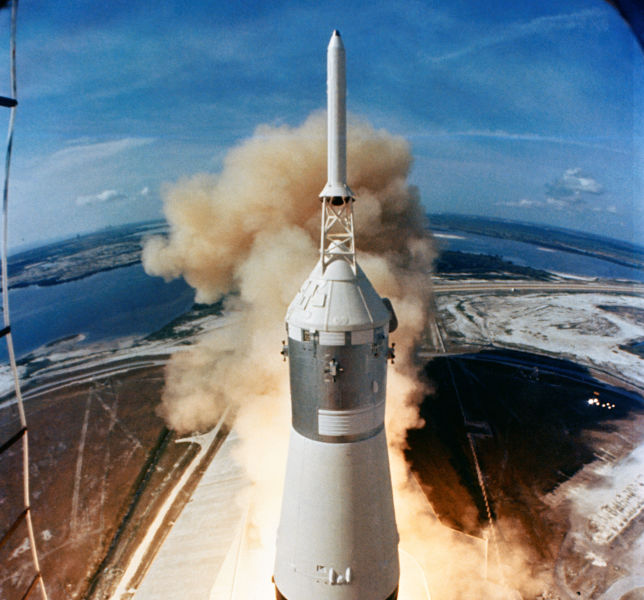Vice President Joe Biden convened a panel of cancer research experts today at the Davos World Economic Forum, the culmination of a week's worth of discussion and media coverage since President Obama announced during his State of the Union address that he would put Biden "in charge of mission control" for a cancer moonshot -- a national initiative to cure the disease (or rather, group of diseases), which the American Cancer Society projected would kill more than 589,000 Americans in 2015 alone.
To be sure, there's been much excitement and optimism about a well-funded national commitment for a cure. And the death last year of the vice president's son, Beau Biden, from brain cancer has brought to the effort a high-profile reminder of the toll cancer takes on so many lives.
However, the initiative is not completely without its skeptics. Here are extracts from five criticisms around the web:
- ‘Moonshot’ to Cure Cancer, to Be Led by Biden, Relies on Outmoded View of Disease (NY Times)
While Mr. Biden’s focus has already made some meaningful difference — he negotiated with Republican congressional leaders a $264 million increase in funding for the National Cancer Institute, the largest in a decade for an agency that has been squeezed by static budgets in recent years — the chances of reaching a moment of victory as the analogy “moonshot” suggests seem entirely unrealistic.
“This is not about getting to one point in a certain period of time,” said Dr. Harold Varmus, a Nobel laureate and former director of the National Cancer Institute.
Unlike in 1971, when President Nixon launched his cancer war, researchers now understand that cancer is not one disease but essentially hundreds. The very notion of a single cure — or as Mr. Obama put it, making “America the country that cures cancer once and for all” — is misleading and outdated.
- There's a worrisome problem with Obama's 'moonshot for cancer' plan (Business Insider)
Cancer is different from many genetic diseases, such as sickle cell or Huntington's, in that it is not linked with a few specific, identifiable genes. Instead it is the result of a whole bunch of mutations, tens of hundreds of tiny twists and pinches in our genes. These mutations are constantly changing and evolving, becoming increasingly resistant to our drugs. And genetics, of course, is not the only cause of cancer — environmental and behavioral factors matter. ...
To say each cancer tumor is unique would be an understatement. "Virtually every tumor looks different from every other tumor," Varmus said. That makes designing drugs to beat them difficult. Many new treatments work only for a tiny subsection of patients, those with a specific subtype of one particular kind of cancer. These are exciting developments, but they don't begin to move the needle on treating — not to mention curing — cancer as a whole.
- Is Obama’s plan to cure cancer a ‘moonshot’? Or a ‘Pluto-shot’?(Maclean's)
New thinking suggests that seeking to “cure” or eradicate cancer is misbegotten. In his acclaimed 2013 book The Cancer Chronicles: Unlocking Medicine’s Deepest Mystery, George Johnson writes that decades of research have forced scientists to reconcile themselves to the paradox that most cancers result from the very cellular activities that support life, not only from destructive environmental culprits like cigarette smoke and UV rays. That means fixing the mechanisms that underlie cancer would also disrupt the cellular functions that keep us alive and evolving. Cancers in children tend to include fewer mutations, which make them more curable, Johnson writes. That’s not the case for cancers in older patients which are believed to result from the accumulation of many mutations over time. Johnson’s conclusion upends the orthodoxy underlying an entrenched cancer treatment complex worth $100 billion globally: “The best response might not be to fight back with chemotherapy and radiation, increasing the stress,” Johnson writes, “but to somehow maintain the exuberant cells—the tumor—in a quiescent state, something that can be lived with.”
- Why Curing Cancer Is Not a ‘Moonshot’ (Time)
Scientists have long known cancer isn’t one disease—it’s perhaps 100 or more, with the number growing as different types and sub-types are better understood. Making things worse, there will be perhaps 1.6 million Americans diagnosed with cancer in the U.S. alone this year, and each of those cases will be in some ways unique. That’s part of the reason two people with the same kind of cancer diagnosed at the same stage and receiving the same treatment can have radically different outcomes.
Actually “curing cancer”—in the larger global sense of simply wiping it out—would require personalized care, designed around every single patient with any single type of the disease. And in order to administer that kind of tailored care to every single person diagnosed with cancer, a whole lot more research is going to be needed. That may not be an unattainable goal—but it’s a devilishly complicated one.
-
Dear Mr. President: Please stop with these science “moonshots” (Ars Technica) Nebulous concepts like "end all cancer" get good applause—curing all cancers is right up there with sunshine and puppies. But such concepts are effectively meaningless. Richard Nixon declared a war on cancer back in 1971. The National Cancer Institute is the largest of all NIH institutes and in Fiscal Year 2016 its budget is $5.1 billion (out of NIH's total of $31 billion). Is the implication that that money is just being wasted right now? That it was insufficient all along, and nobody cared or realized?"
